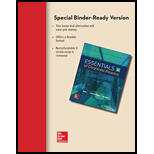
To determine: The number of periods of investment.
Introduction:
The
Answer to Problem 5QP
The number of periods is as follows:
| Particulars |
Present value |
Years |
Interest Rate |
Future value |
| Investment A | $195 | 17.39 | 9% | $873 |
| Investment B | $2,105 | 7.51 | 7% | $3,500 |
| Investment C | $47,800 | 16.95 | 12% | $326,500 |
| Investment D | $38,650 | 9.82 | 19% | $213,380 |
Explanation of Solution
Given information:
Investment A has a present value of $195, future value of $873, and an interest rate of 9 percent. Investment B has a present value of $2,105, future value of $3,500, and an interest rate of 7 percent.
Investment C has a present value of $47,800, future value of $326,500, and an interest rate of 12 percent. Investment D has a present value of $38,650, future value of $213,380, and an interest rate of 19 percent.
Formula:
Derive the formula to calculate the number of periods from the present value equation as follows:
The formula to calculate the number of periods:
Where,
“t” refers to the number of years or periods of investment
“ln” refers to the log value
“FV” refers to the future value
“PV” refers to the present value
“r” refers to the simple rate of interest
Compute the number of periods for Investment A:
Hence, the number of periods of Investment A is 17.39 years.
Compute the number of periods for Investment B:
Hence, the number of periods of Investment B is 7.51 years.
Compute the number of periods for Investment C:
Hence, the number of periods of Investment C is 16.95 years.
Compute the number of periods for Investment D:
Hence, the number of periods of Investment D is 9.82 years.
Want to see more full solutions like this?
Chapter 4 Solutions
Loose Leaf for Essentials of Corporate Finance
- Suppose you want to estimate your transportation expenses for the year.Explain how you could use this one-month statement to make an estimate for one year of transportation expenses.arrow_forwardHow many days is the average collection period ahd what is the current ratio?arrow_forwardwhat is the the quick ratio for both yearsarrow_forward
- Why does the APR term doEs not explain precisely the amount of interest that will accumulate in a year?arrow_forwardThe total amount of money in an account with P dollars invested in it is given by the formula A=P+PrtA=P+Prt, where r is the rate expressed as a decimal and t is time (in years).If $525$525 is invested at 14%14%, how much money will be in the account after 3030 months? Round your answer to two decimal places if necessary.arrow_forwardWhat is the name given to a series of multiple, equal payments when each payments will occur at the end of its time period and when the payments are expected to occur forever?arrow_forward
- Compute the times for elements a, b, c, d, and e when elements a + b + c were timed at 0.062 minute and b + c + d were found to equal 0.073 minute; c + d + e, 0.095 minute; d + e + a, 0.093 minute; and e + a + b, 0.067 minute. What is the elemental time for a and d?arrow_forwardWhat are the three components of the interest formula?Explain how this formula adjusts for interest periods thatare less than a full year.arrow_forwardFind the missing values assuming continuously compounded interest. (Round your answers to two decimal places)arrow_forward
 Excel Applications for Accounting PrinciplesAccountingISBN:9781111581565Author:Gaylord N. SmithPublisher:Cengage Learning
Excel Applications for Accounting PrinciplesAccountingISBN:9781111581565Author:Gaylord N. SmithPublisher:Cengage Learning Essentials of Business Analytics (MindTap Course ...StatisticsISBN:9781305627734Author:Jeffrey D. Camm, James J. Cochran, Michael J. Fry, Jeffrey W. Ohlmann, David R. AndersonPublisher:Cengage Learning
Essentials of Business Analytics (MindTap Course ...StatisticsISBN:9781305627734Author:Jeffrey D. Camm, James J. Cochran, Michael J. Fry, Jeffrey W. Ohlmann, David R. AndersonPublisher:Cengage Learning

